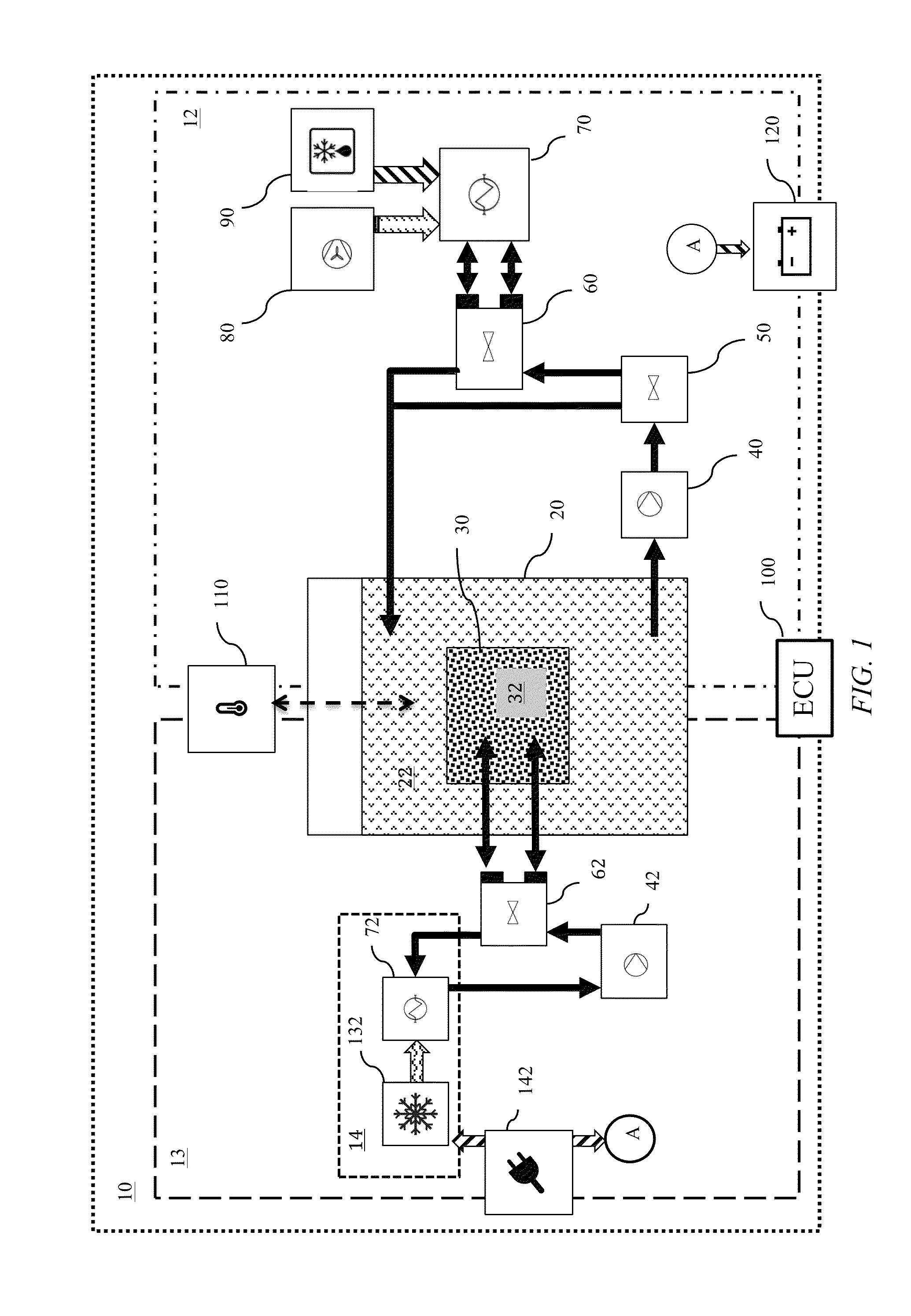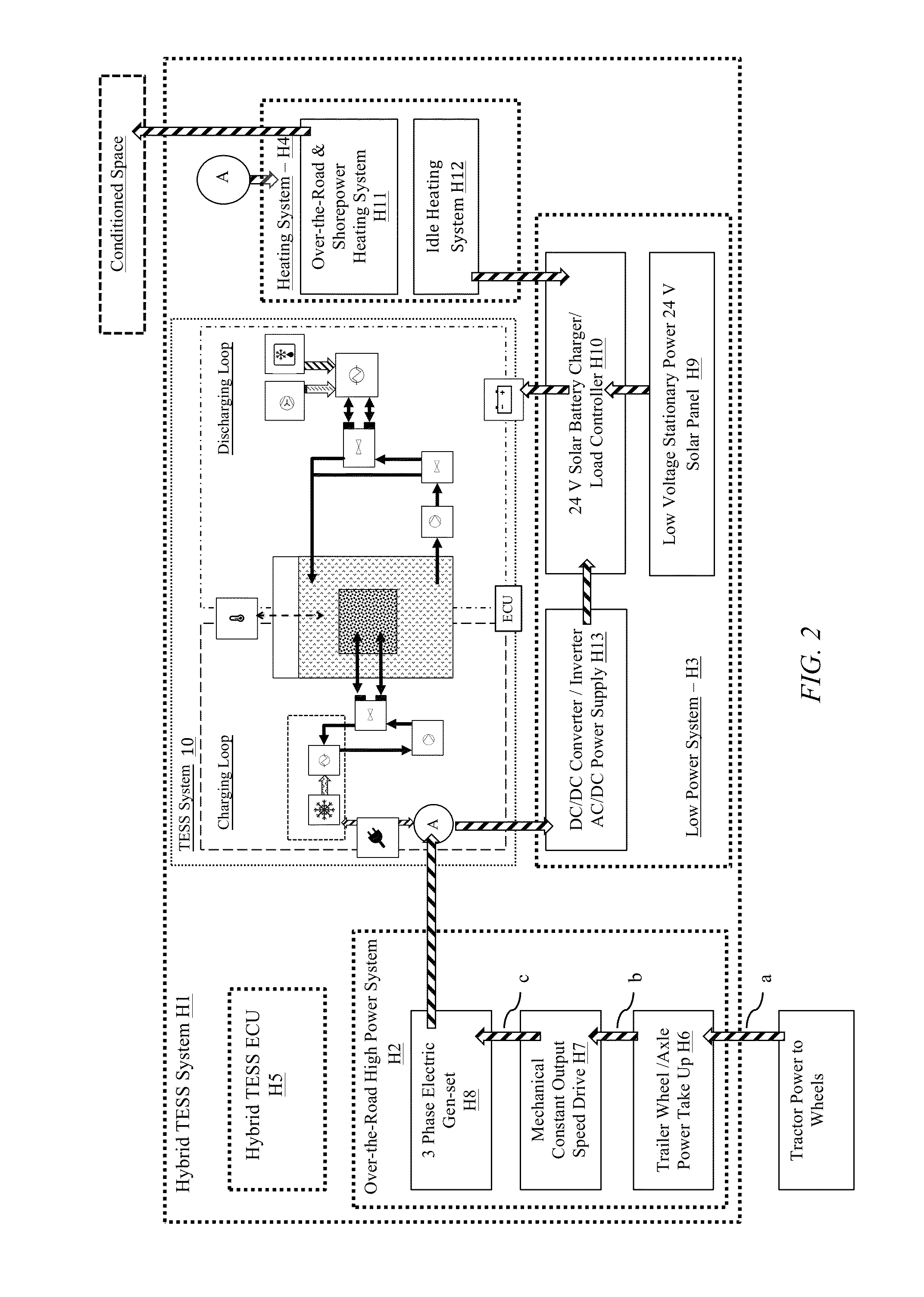Transportation refrigeration system with integrated power generation and energy storage
a refrigeration system and transportation technology, applied in the field of thermal energy storage devices and refrigeration systems, can solve the problems of high operating costs, noise restrictions, and operation by using diesel fuel, and achieve the effects of reducing operating costs, reducing operating costs, and improving efficiency
- Summary
- Abstract
- Description
- Claims
- Application Information
AI Technical Summary
Benefits of technology
Problems solved by technology
Method used
Image
Examples
Embodiment Construction
[0080]The present invention provides a hybrid-powered thermal energy storage system (HTESS) that enables the discharge of refrigerated air for cooling cargo or passengers in large compartments, such as the trailer of a semi-truck a transit bus or a rail-container, for typical shift service life periods and indefinitely while in motion over the road or while plugged into shore power. The HTESS system is able to provide refrigeration without the use of a conventional TRU diesel APU engine during the entire service use, or the entire time a 53-foot refrigerated the truck or transit bus is traveling over the road. Additionally, HTESS can provide cooling without operating the VCC system or the truck / bus engine for several hours while the trailer or bus is parked or is idling in traffic.
[0081]The HTES system can charge quickly via shore power or trailer wheel / axle motor power over the road and provide multi-temperature cooling over the road and while stationary, thereby eliminating the di...
PUM
 Login to View More
Login to View More Abstract
Description
Claims
Application Information
 Login to View More
Login to View More - R&D
- Intellectual Property
- Life Sciences
- Materials
- Tech Scout
- Unparalleled Data Quality
- Higher Quality Content
- 60% Fewer Hallucinations
Browse by: Latest US Patents, China's latest patents, Technical Efficacy Thesaurus, Application Domain, Technology Topic, Popular Technical Reports.
© 2025 PatSnap. All rights reserved.Legal|Privacy policy|Modern Slavery Act Transparency Statement|Sitemap|About US| Contact US: help@patsnap.com



